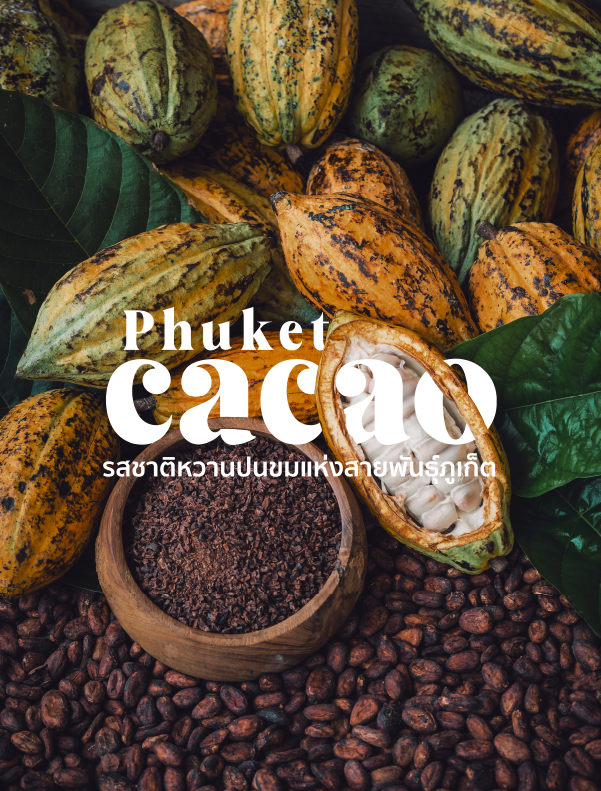If we mention the word “cacao,” many people may not know or be familiar with what it is. However, if we say “cocoa” or “chocolate,” it is undoubtedly a beloved sweet treat for many. Cacao is actually the native name of the cocoa tree, the origin of chocolate itself. Nowadays, the cultivation of cacao or Thai cocoa plants for beverages and chocolate production has gained more attention in various regions. This is because each region has its unique taste, making cacao an essential part of their identity. Phuket cacao is another distinctive feature of Phuket’s cocoa lineage. For those who are enchanted by the bittersweet allure of chocolate, visiting Phuket should definitely include a taste of it.
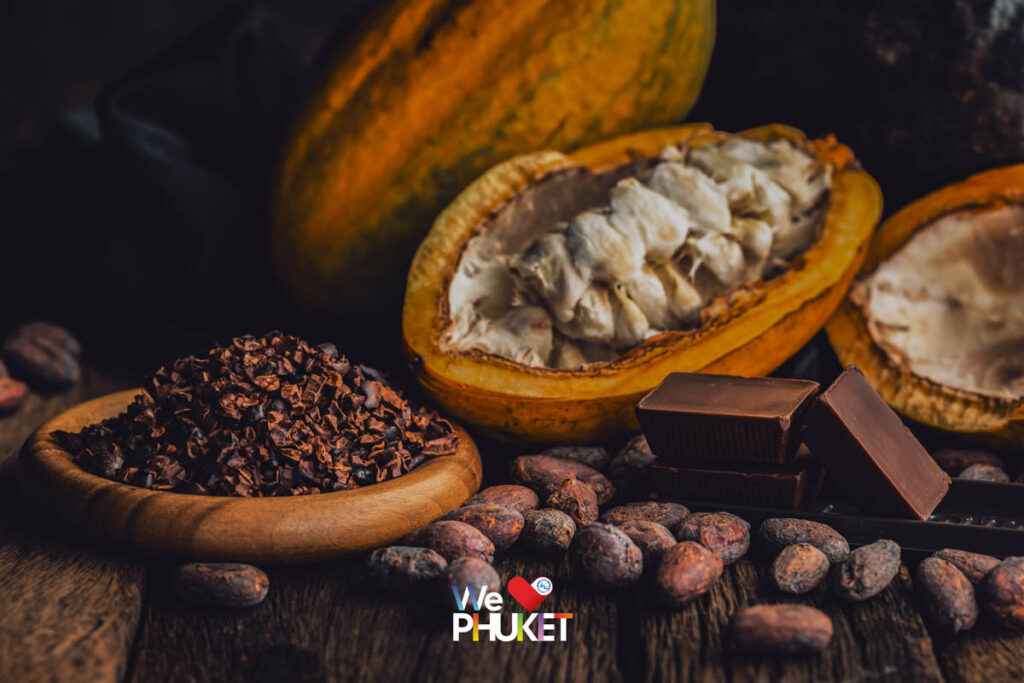
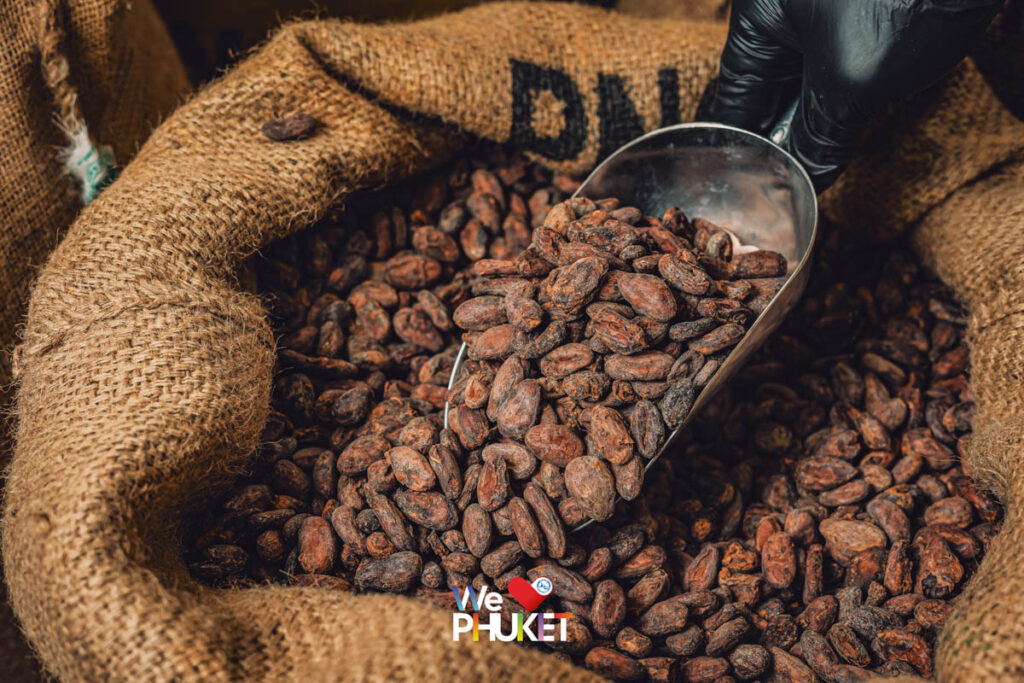
Khun Promwihan Bumrungthin is one of those who are passionate about the craft of chocolate-making from locally sourced cacao. He founded “Phuket Cacao” and the “Phuket Cocoa Community Enterprise” to introduce the unique taste of Phuket-style chocolate to everyone.
Khun Promwihan, or Khun Oh, is a Phuket native who had the opportunity to live a different life in Chiang Mai for a while. Intrigued by alternative lifestyles, he transitioned from being a photographer to becoming an organic vegetable farmer, building an earth-friendly home, living in harmony with nature, and even owning a vegan restaurant in Chiang Mai.
One day, a regular customer at his restaurant, a Dutch national, asked him if they could serve some good chocolate. This prompted Khun Oh to question, “What is good chocolate?”
It sparked the question of what makes good chocolate, and for the first time, we picked up the chocolate we had been eating for who knows how long and read the label to find out that it contained only a small amount of cocoa powder. Besides that, there was sugar, milk, palm oil, or vegetable fat. So, we started to gather information and talked to that customer. He suggested, “Why not try making it yourself? You can do it.” In our minds, we thought making chocolate would require a significant investment. How big should it be? He introduced us to craft chocolate and sent a video to watch. The process was quite simple. So, we decided to give it a try.
We roasted dried cocoa beans on a pan, cracked the shells, and used a stone grinder and a rolling pin to keep grinding until a liquid started coming out. It was cocoa butter. If you want it a bit sweeter, you can add some sugar and keep grinding. That’s how you get chocolate. We poured it into molds and put it in the fridge. Once we tried making it and succeeded, we decided to serve it at the restaurant for customers to enjoy at parties, along with tea and coffee. The customers loved it, so we began offering samples to more people and started selling our own small brand of chocolate called “Emika,” named our daughter.”
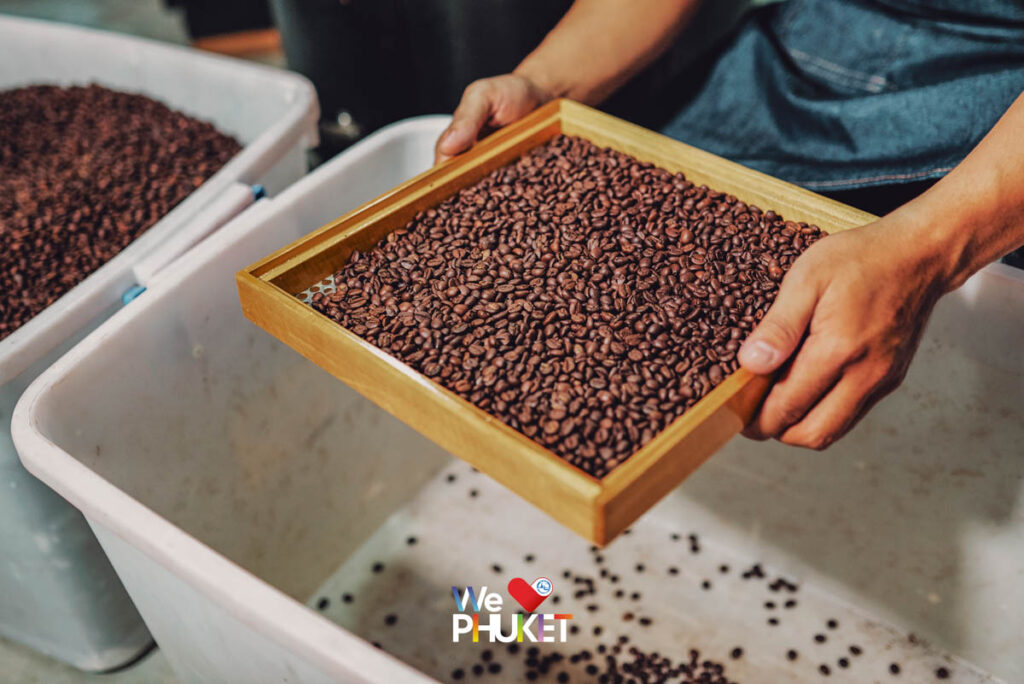
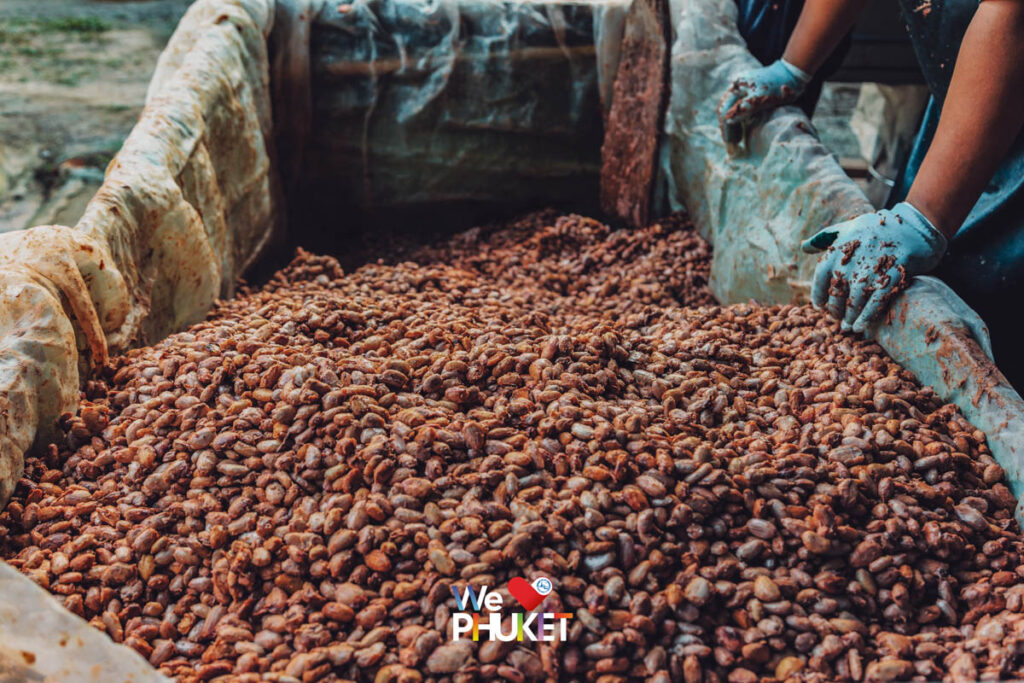
The question led Khun Oh to understand and grasp the meaning of the term “craft chocolate” and the Bean to Bar process that transforms cocoa beans into chocolate while preserving the chocolate’s intrinsic value.
In the past, we consumed chocolate that had gone through the industrial manufacturing process, which had a similar starting point: cocoa beans underwent fermentation, drying, and roasting, followed by cracking and grinding. However, the crucial difference lies in how the industry separates cocoa butter from the beans because cocoa butter has high value and can be used to produce lipsticks, high-quality lotions, and more. In the industrial process, chemicals are often introduced to expedite fermentation and reduce processing time, resulting in the cocoa powder commonly found in our consumption.
Craft chocolate, on the other hand, retains the cocoa butter and maintains control over the flavor through the fermentation and roasting steps. Importantly, it allows for the consumption of healthier chocolate.
In summary, the craft chocolate-making process keeps cocoa butter intact and offers control over flavor through fermentation and roasting, resulting in a healthier chocolate consumption option.
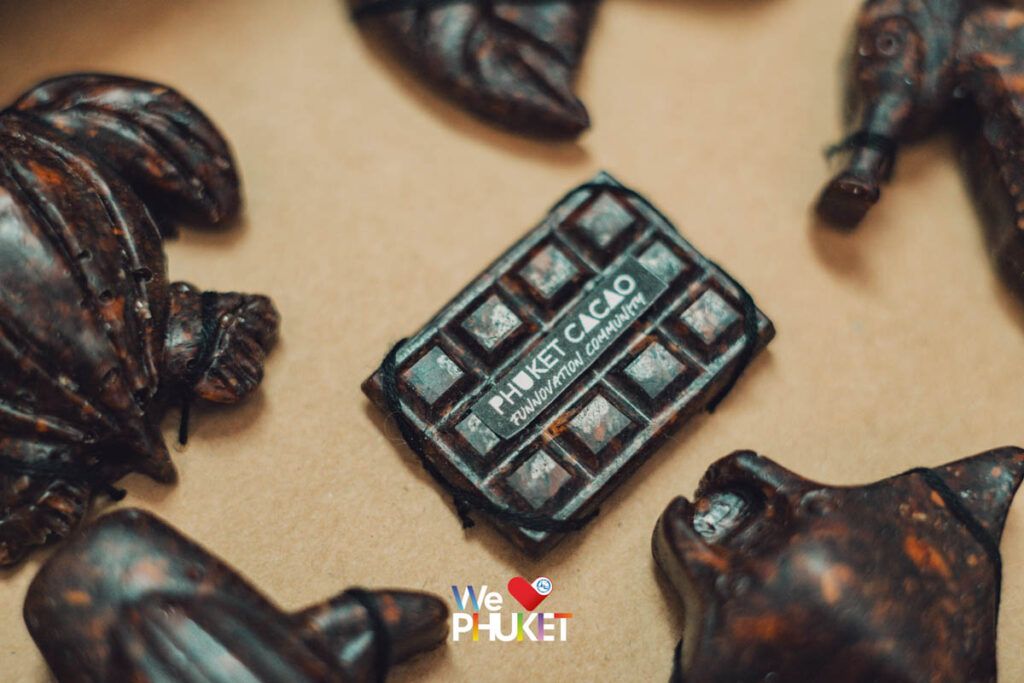
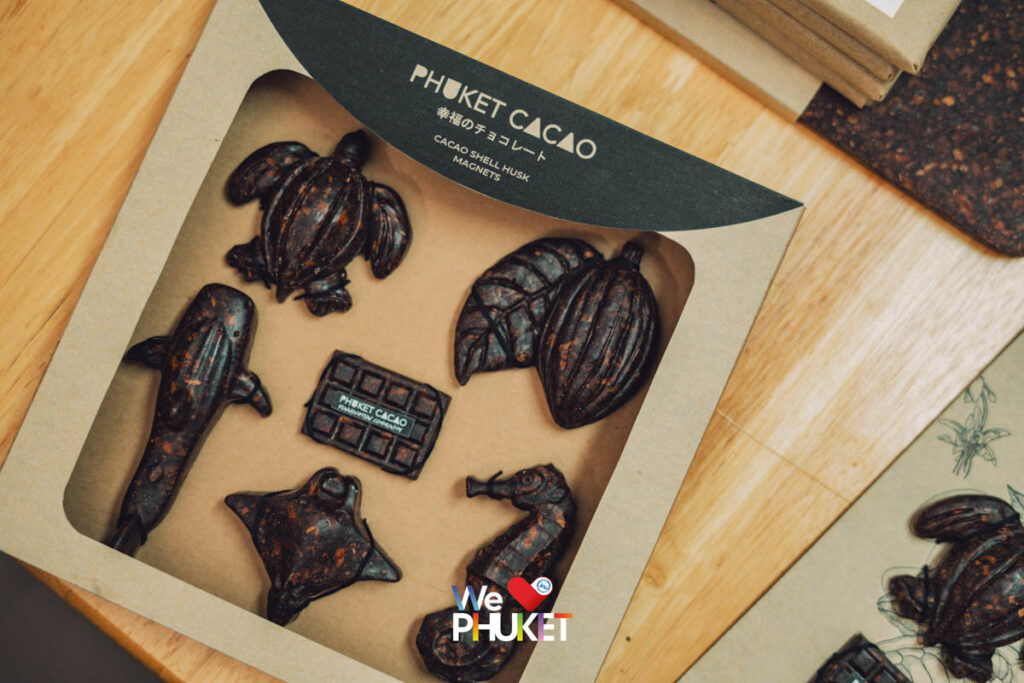
Khun Oh dedicated time to self-study and hands-on learning about cocoa, making him one of the very first individuals in Thailand to earnestly pursue the craft of chocolate-making. He collected invaluable experiences in this field. He even started teaching the art of crafting chocolate to those who shared a passion for it. However, a turning point in life brought Khun Oh back to his hometown in Phuket, where he began a new chapter.
This marked the beginning of the creation of the “Phuket Cacao” brand and the “Phuket Cocoa Community Enterprise.”
“I’ve taught almost everywhere in the country and have a network all over Thailand. However, it’s strange that I’ve never had a class in Phuket before. Once, I went to teach in Nakhon Si Thammarat, and it turned out that everyone in the class was from Phuket. They had come together to learn. They were a group of farmers who were growing cocoa but didn’t know how to handle the produce. At that time, when I made the decision to return home and live in Phuket again, I thought about starting something in our hometown.
I had conversations with cocoa farmers in Phuket and encouraged them to establish the Phuket Cocoa Community Enterprise. It became a network that spanned from the source to the consumer. The aim was to allow farmers to stay involved by processing cocoa produce into chocolate, which could then be supplied to cafes, bakeries, or consumers. I have a nationwide network of people who are interested in consuming locally sourced cocoa or unique craft chocolate with complete flavor and value.”
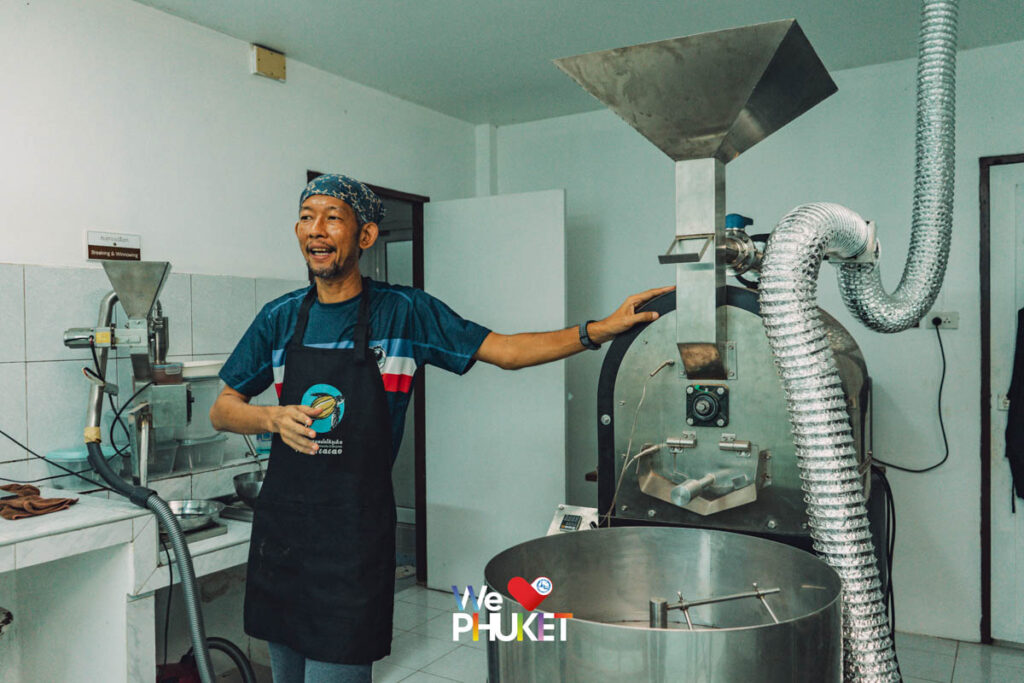
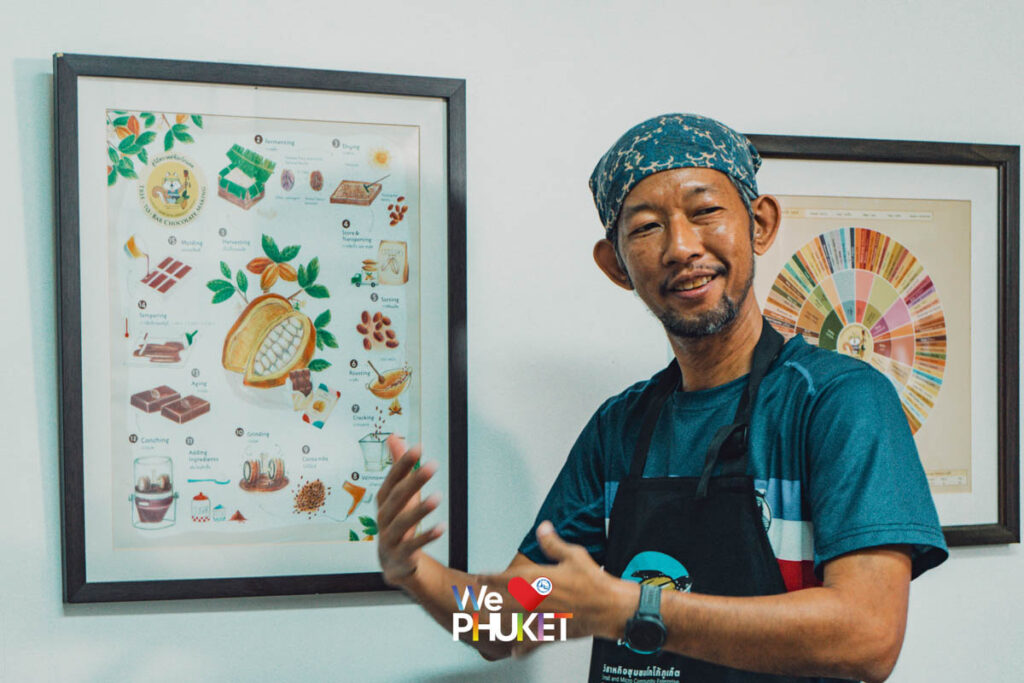
Cocoa trees grown in different locations will have varying flavors. When tasting, you’ll experience multidimensional tastes and aromas in your mouth. The cocoa varieties cultivated in Phuket, for example, have a chocolatey, fruity taste that combines bitterness and sweetness, making them easy to enjoy. On the other hand, cocoa from Phang Nga may have an earthy taste with hints of soil or wood and a slight sourness. It’s important to acknowledge that currently, the cocoa cultivation area in Phuket is insufficient to meet the demand. As a result, we have to blend cocoa from Phang Nga and present it as a unique Damman variety. Furthermore, the flavor dimensions also differ depending on the fermentation and roasting environment, and producers can adjust the taste to their preferences. This diversity adds to the charm of cocoa and chocolate production and tasting, making it a delightful lifestyle.
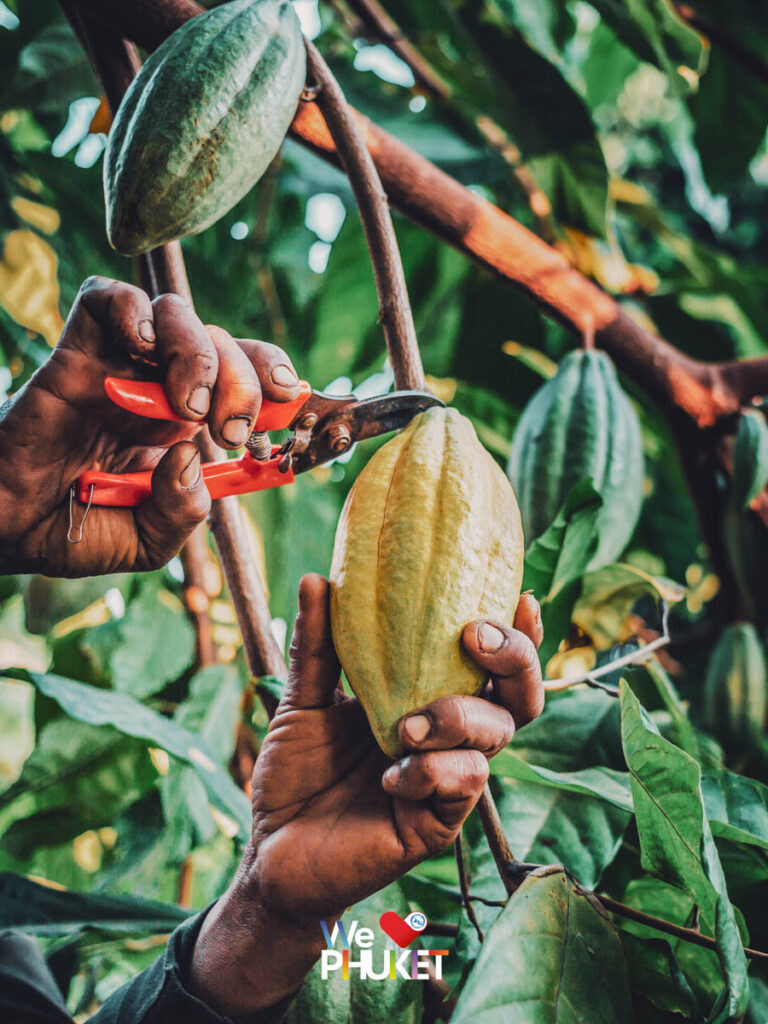
Currently, Khun Oh has transformed his home into a small chocolate factory with limited production capacity. Part of the chocolate production is sold as raw materials to cafes, bakeries, and those who appreciate this unique flavor. He also uses this space as a studio to conduct monthly craft chocolate-making classes for those genuinely interested in learning. If you’re interested in ordering products or want to delve into this craft, you can inquire through the Phuket Cacao Facebook page, which is the platform for the Phuket Cocoa Community Enterprise.
In addition, there are souvenir products made from cocoa shells that represent the identity of Phuket in the pipeline for future production and sale. Furthermore, Khun Oh plans to expand his activities to Bang Wad Dam, where he aims to create an educational hub for cocoa, teaching children and interested individuals about the entire process from cocoa beans to chocolate, inspiring and spreading knowledge. Additionally, he intends to distribute Phuket Cacao products through organic farm product stores.
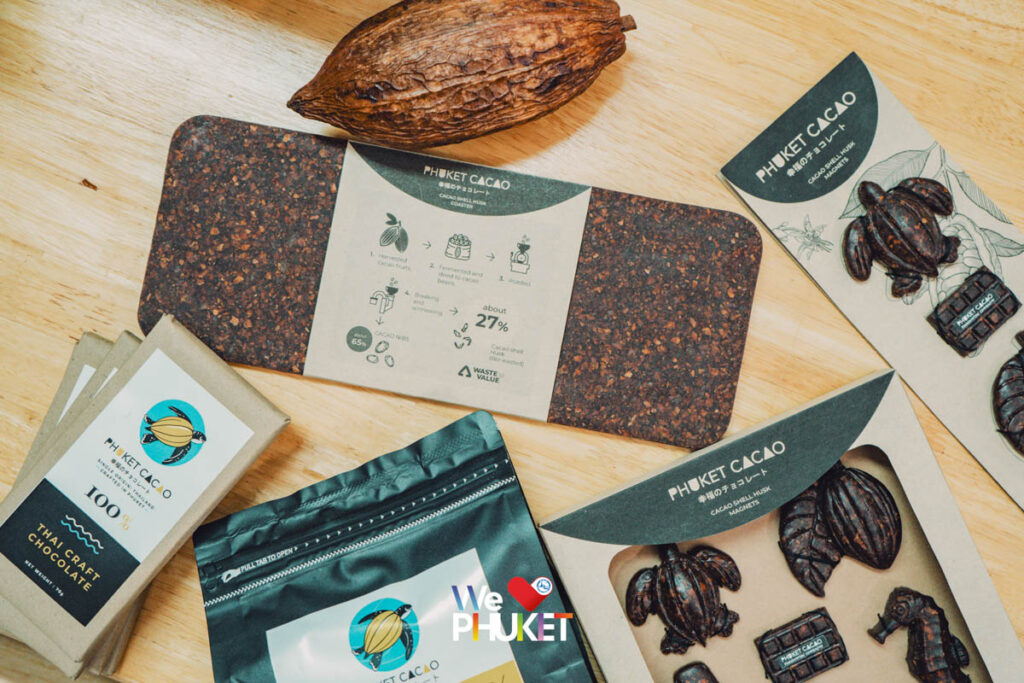
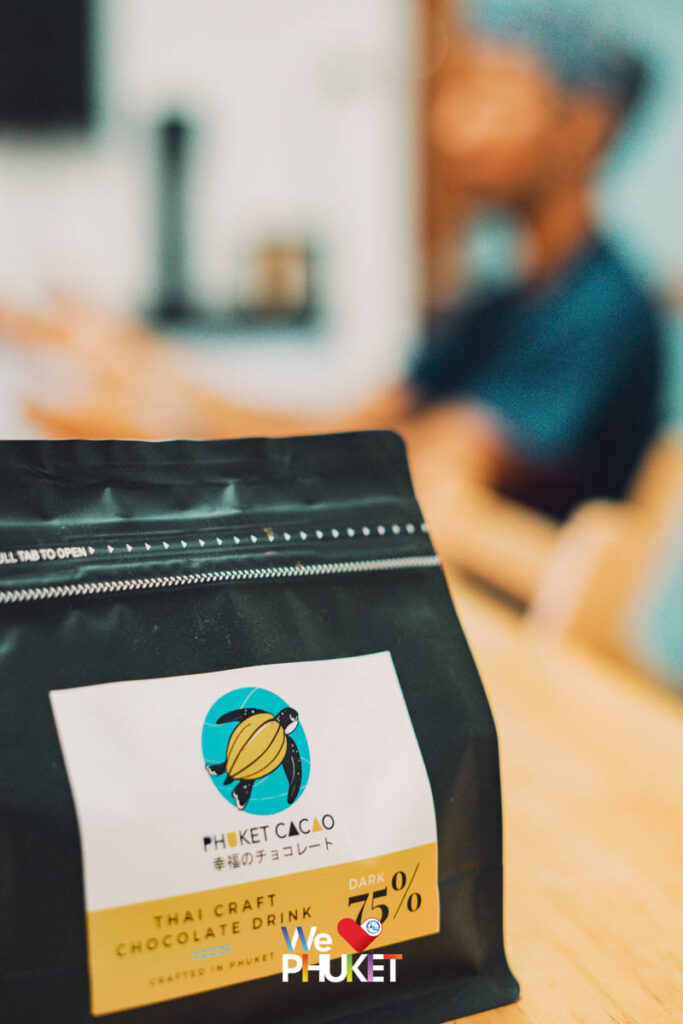
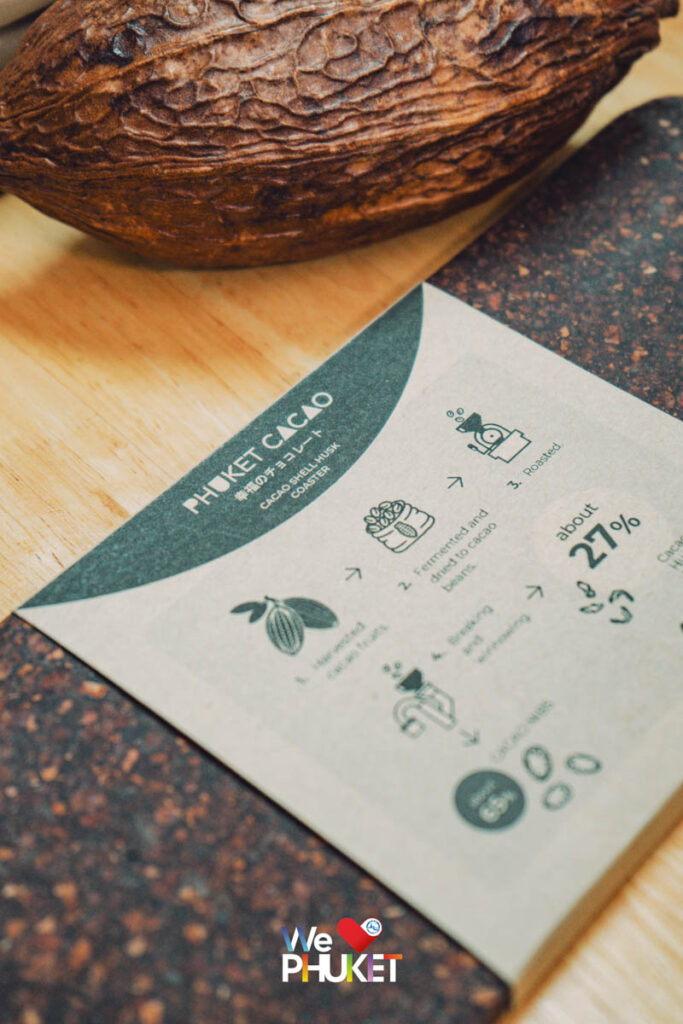
“For me, cocoa cultivation and chocolate-making are about connecting people on a deeper level. The charm lies in the diverse flavors, which are natural and healthy. Moreover, returning to do these things in Phuket allows us to present yet another aspect of Phuket’s identity, our home. It’s a small starting point that fills me with pride.”
Facebook : https://www.facebook.com/PhuketCacao

 ไทย
ไทย